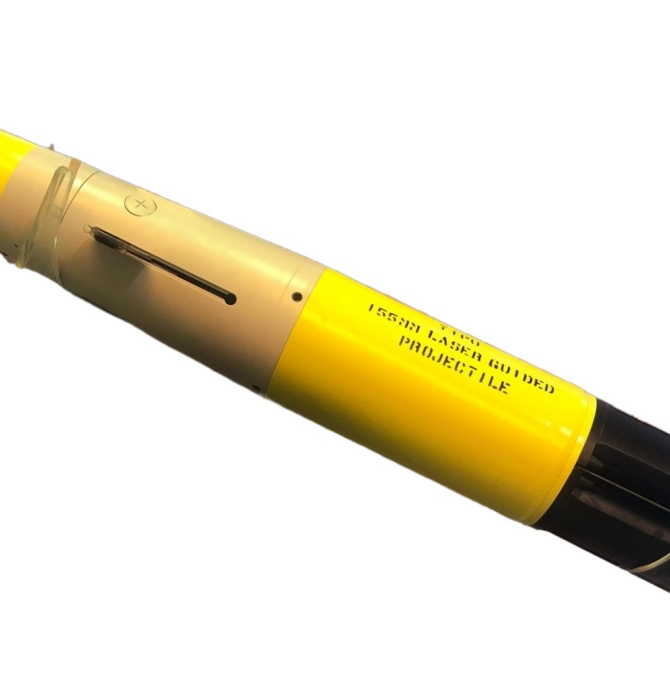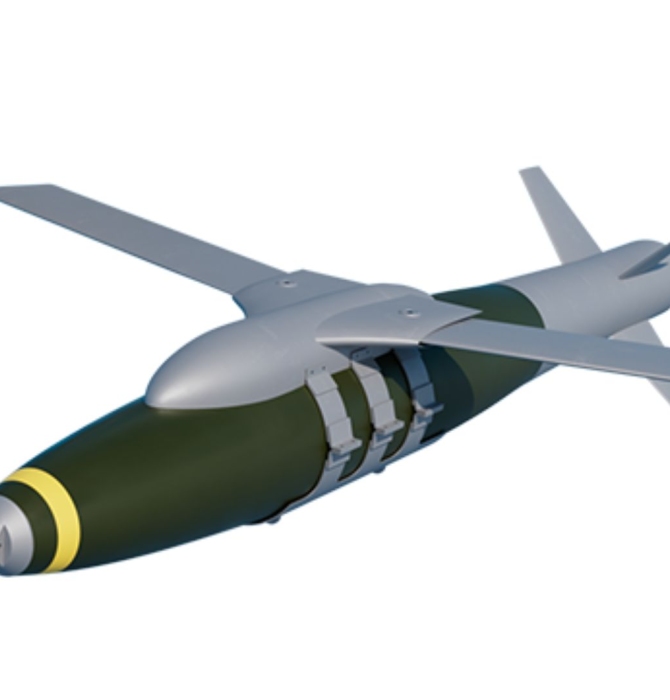6978Views

GIDS Blaze-25/50/75 Loitering Munitions
Global Industrial and Defence Solutions (GIDS), a Pakistani state-owned enterprise (SOE) commercially representing the country’s Strategic Plans Divisions (SPD) bureaus, revealed the Blaze family of loitering munitions at the 2024 International Defence Exhibition and Seminar (IDEAS 2024).
GIDS Blaze 25
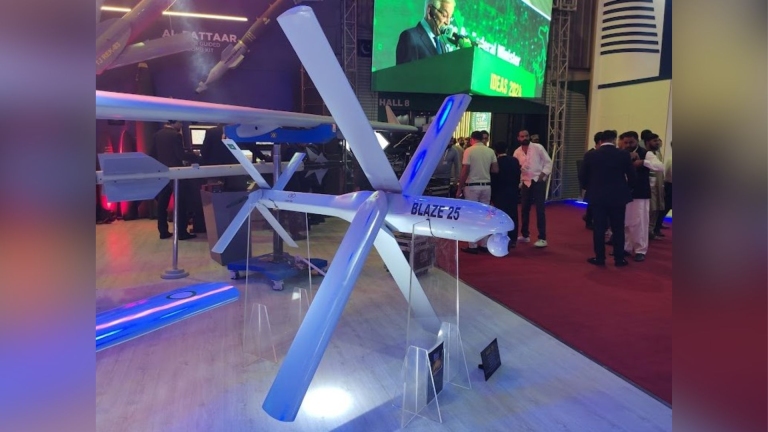
The Blaze 25 is the lightest and most compact member of the family.
Weighing 25 kg, it is powered by an electric propulsion system, which makes it ideal for missions requiring low acoustic and thermal signatures. The system can travel up to 75 km or loiter for 60 minutes, enabling it to perform tactical strikes in short-range scenarios.
When used as a drone, the Blaze 25 has a data-link range of 10 km, significantly shorter than its engagement range. This suggests the inclusion of autonomous targeting capabilities, allowing it to operate independently once deployed.
GIDS Blaze-25 Specifications
- Weight: 25 kg
- Range: 75 km
- Endurance: 60 minutes
- Warhead Type: TBD
- Powerplant: Electric propulsion
GIDS Blaze 50
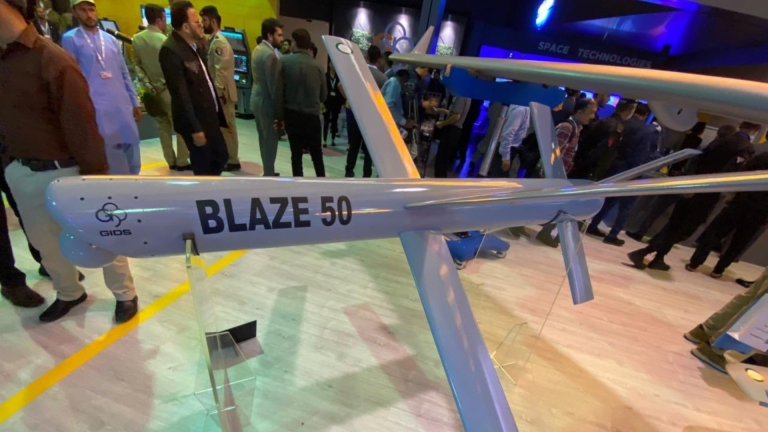
The mid-range Blaze 50 offers enhanced performance compared to its smaller counterpart.
Weighing 50 kg, it features a maximum range of 180 km or an endurance of 60 minutes, making it suitable for medium-range missions. It carries a 20 kg warhead, providing sufficient firepower for neutralizing high-value targets such as armored vehicles or installations.
Its data-link range extends to 100 km when used as a drone, offering greater operational flexibility. Like the Blaze 25, this variant likely incorporates autonomous targeting systems to engage targets beyond its communication range.
GIDS Blaze-50 Specifications
- Weight: 50 kg
- Range: 180 km
- Endurance: 60 minutes
- Warhead Weight: 20 kg
- Data-Link Range: 100 km
- Powerplant: TBD
GIDS Blaze 75
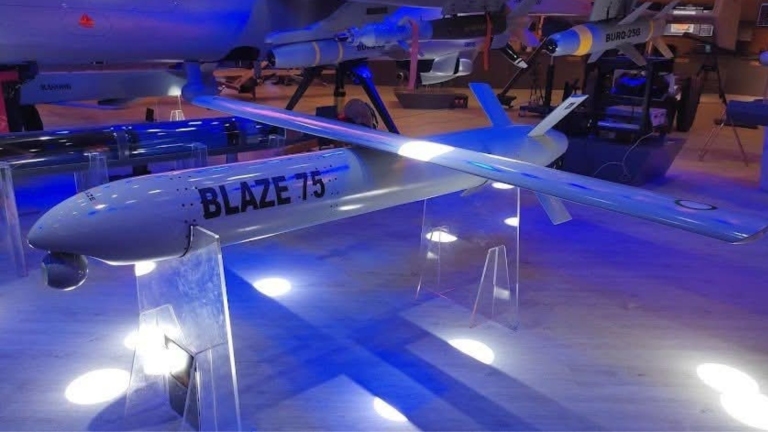
The largest member of the family, the Blaze 75 weighs 75 kg and delivers a range of 500 km or an endurance of 240 minutes.
This extended capability positions it as a strategic asset for deep-strike missions. It carries a 30 kg warhead, making it the most lethal variant in the series.
When operated as a drone, the Blaze 75 has a data-link range of 150 km, which is still shorter than its engagement range. This reinforces the notion that the Blaze-series leverages autonomous targeting technologies for long-range operations without continuous human intervention.
GIDS Blaze-75 Specifications
- Weight: 75 kg
- Range: 500 km
- Endurance: 240 minutes
- Warhead Weight: 30 kg
- Data-Link Range: 150 km
- Powerplant: TBD
Key Capabilities of GIDS' Blaze Loitering Munitions Family
The GIDS Blaze-family is poised to play a key role in Pakistan’s growing loitering munitions portfolio. With three weight, range, and payload classes, GIDS is looking to equip multiple layers of the Pakistani military with loitering munitions suited for specific missions.
Optional Autonomous Operations
One common feature across each of the GIDS Blaze sub-variants is that each loitering munition can take on some measure of autonomous operations. The SPD developers of the Blaze-series have caught onto the growing pervasiveness of electronic warfare (EW), which could disrupt communications data-links and satellite navigation connectivity.
So, to ensure that these munitions are viable in such environments, there is a growing focus on automatic target recognition and engagement. This is not limited to the GIDS Blaze family; it seems to be a piece of the other SPD-driven munitions shown at IDEAS 2024 as well.
Relatively Long-Range
Each of the GIDS Blaze sub-variants is also capable of long-range flight, with Blaze 50 and Blaze 75 both treading into the territory typically held by guided rockets and cruise missiles.
However, given that the Blaze-50 and Blaze-75 are larger and heavier, the end-user would deploy them from launch vehicles equipped with canisters or tubes. The focus in this sense would be on mobility and, potentially, lack of detectability to get munition launchers in key positions as quickly as possible.
News Updates, Comments, and Analysis
The GIDS Blaze-series adds to Pakistan’s fast-growing loitering munitions market, one where numerous state-owned and private sector enterprises are fully engaged in designing original solutions.
While one could have expected the Pakistani military to invest in loitering munitions (especially following the Russia-Ukraine War), the rapid growth of domestically designed solutions was unexpected. Moreover, Pakistan’s loitering munitions program is relatively expansive and sophisticated in that it consists of many clusters, each with unique capability advantages and use cases.
In the broadest terms, Pakistan has two general loitering munitions clusters: jet-powered miniature cruise missiles and slower-moving electrical or piston-powered systems. Within each of these two core groups or clusters, there are multiple range, size, and payload classes.
On the surface, one can see that the jet-powered class would be costlier; therefore, these would likely be reserved for strikes with strategic or high-value tactical impact. But the electrical/piston-powered systems are likely meant to be low cost and scalable, echoing the mass-swarm approaches seen with the Iranian Shahed-series, for example.
However, one common theme across both overarching clusters is controlling weight. It seems there was an intentional focus on ensuring that the heaviest loitering munitions would be relatively light, even if they could provide a range of 500-1,000 km. Thus, this focus could be a precursor to develop new lightweight platforms – be it manned or unmanned – to potentially ferry and deploy these munitions.

